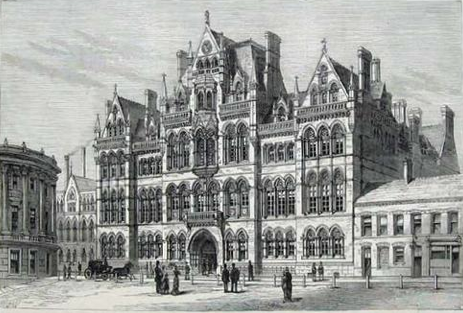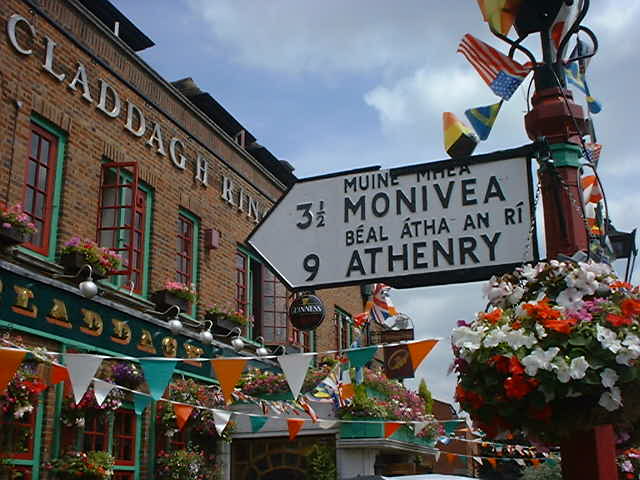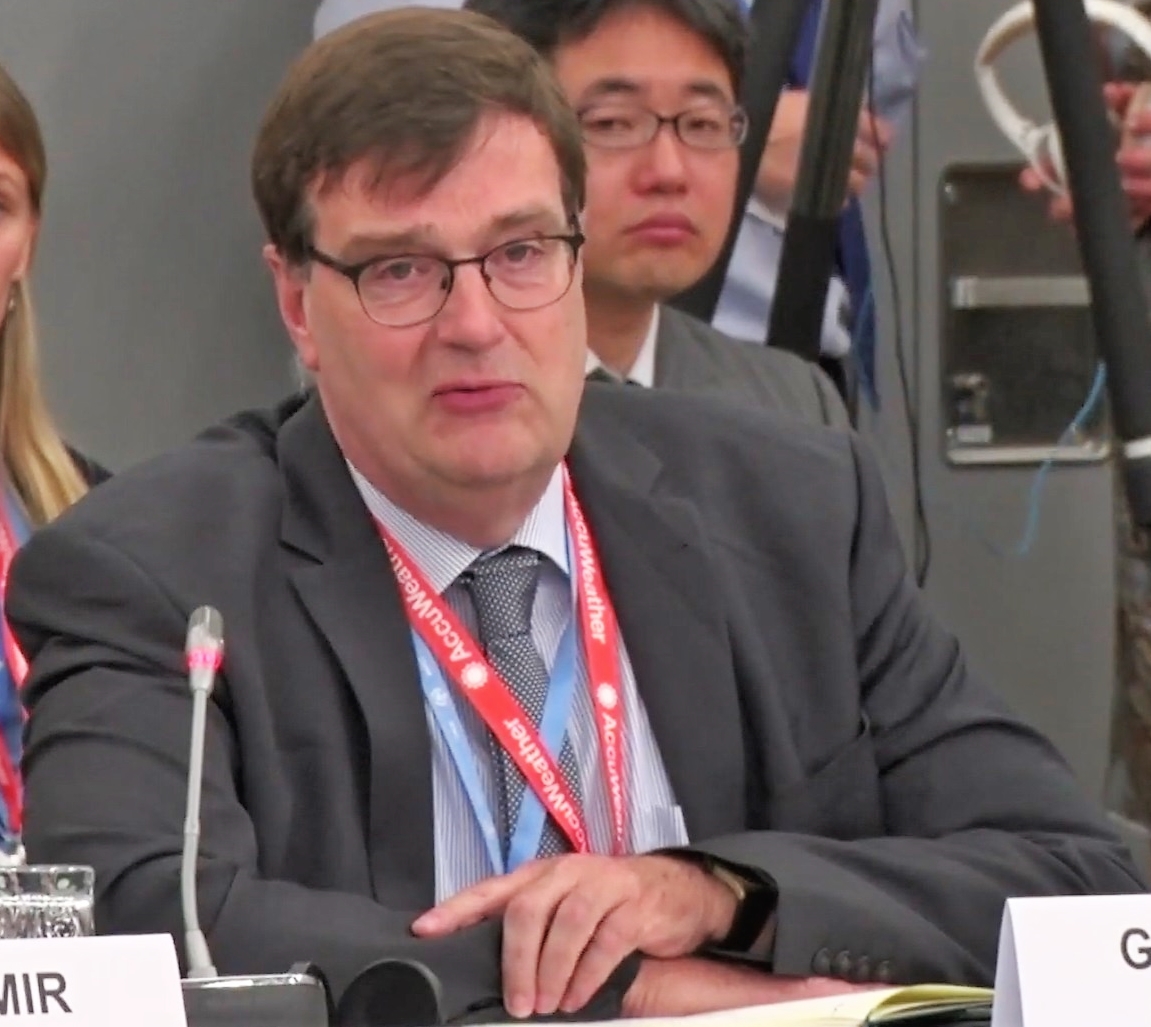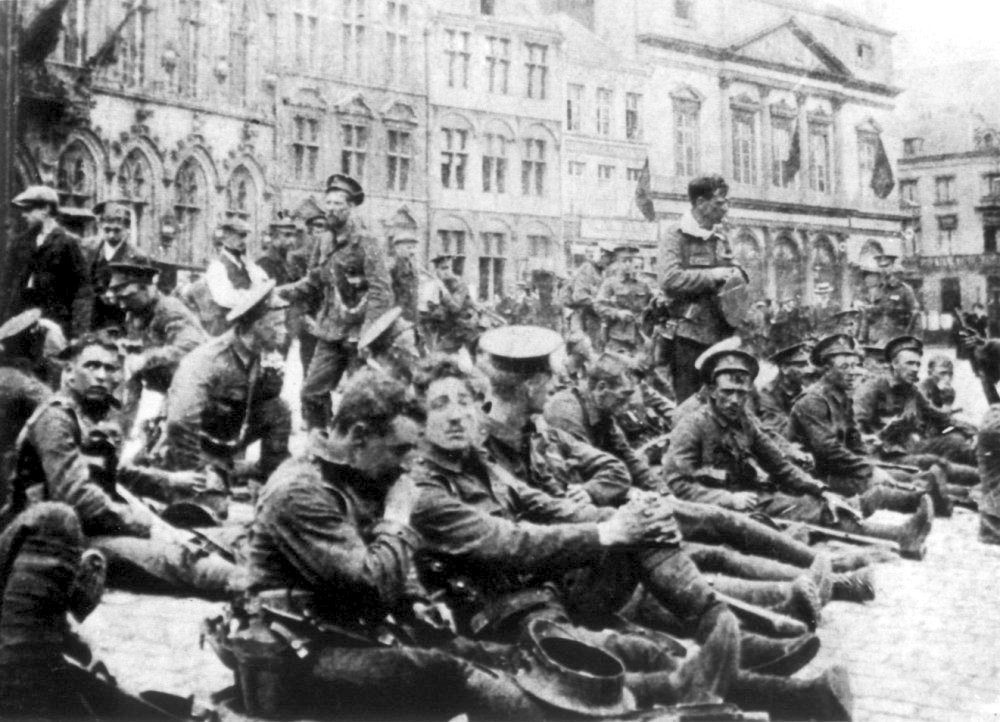|
Ernest Gold (meteorologist)
Ernest Gold (24 July 1881 – 30 January 1976) was a British meteorologist and Lieutenant-Colonel. Family and education Ernest Gold was born at Berkswell, near Coventry, Warwickshire, in 1881. His parents were John Gold, a tenant farmer, and Ellen Gold Peckett. He was educated at Coleshill Grammar School and Mason University College (which became the University of Birmingham). Gold then attended St John's College, Cambridge. He was awarded First Class Honours in the Cambridge Natural Sciences Tripos in 1903, graduating as Third Wrangler. Early career In June 1906, Gold was employed for a year at the Meteorological Office as Superintendent of Instruments. From 1907 to 1910 he was appointed the Schuster Reader in Dynamical Meteorology at the University of Cambridge. During this time he focused his research on radioactive equilibrium in the stratosphere and produced the first scientific explanation for isothermal conditions. In 1910 he returned to work at the Meteorolo ... [...More Info...] [...Related Items...] OR: [Wikipedia] [Google] [Baidu] |
Mason Science College
Mason Science College was a university college in Birmingham, England, and a predecessor college of the University of Birmingham. Founded in 1875 by industrialist and philanthropist Sir Josiah Mason, the college was incorporated into the University of Birmingham in 1900. Two students of the college, Neville Chamberlain and Stanley Baldwin, later went on to become Prime Minister of the United Kingdom, prime ministers of the United Kingdom. History The college was established by an English industrialist and philanthropist Sir Josiah Mason in 1875. The building of the college in Edmund Street, Birmingham was designed by Jethro Cossins and opened on 1 October 1880 and was marked by a speech by Thomas Henry Huxley. In the speech, Huxley considered the opening of the college as a victory for scientific cause and supported Mason's antagonistic views on the classics and theology. The college developed various liberal and vocational subjects, but forced out the artisans. The medical an ... [...More Info...] [...Related Items...] OR: [Wikipedia] [Google] [Baidu] |
British Armed Forces
The British Armed Forces are the unified military, military forces responsible for the defence of the United Kingdom, its British Overseas Territories, Overseas Territories and the Crown Dependencies. They also promote the UK's wider interests, support international peacekeeping efforts and provide humanitarian aid. The force is also known as His Majesty's Armed Forces. Since the formation of the united Kingdom of Great Britain in 1707 (later succeeded by the United Kingdom of Great Britain and Ireland, and finally by the United Kingdom of Great Britain and Northern Ireland), the British Armed Forces have seen action in most major wars involving the world's great powers, including the Seven Years' War, the American Revolutionary War, American War of Independence, the Napoleonic Wars, the Crimean War, the First World War and the Second World War. Britain's victories in most of these wars allowed it to influence world events and establish itself as one of the world's leading mili ... [...More Info...] [...Related Items...] OR: [Wikipedia] [Google] [Baidu] |
Hendon
Hendon is an urban area in the London Borough of Barnet, northwest London northwest of Charing Cross. Hendon was an ancient Manorialism, manor and parish in the county of Middlesex and a former borough, the Municipal Borough of Hendon; it has been part of Greater London since 1965. Hendon falls almost entirely within the NW4 postcode, while the West Hendon part falls in NW9. Colindale to the northwest was once considered part of Hendon but is today separated by the M1 motorway. The district is most famous for the London Aerodrome which later became the RAF Hendon; from 1972 the site of the RAF station was gradually handed over to housing development and to the Royal Air Force Museum London, RAF Museum. The railways reached Hendon in 1868 with Hendon railway station, Hendon station on the Midland Main Line, followed by the London Underground further east under the name Hendon Central tube station, Hendon Central in 1923. Brent Street emerged as its commercial centre by the 1890s ... [...More Info...] [...Related Items...] OR: [Wikipedia] [Google] [Baidu] |
Royal Meteorological Society
The Royal Meteorological Society is an organization that promotes academic and public engagement in weather and climate science. Fellows of the Society must possess relevant qualifications, but Members can be lay enthusiasts. It publishes various journals, including the '' Quarterly Journal of the Royal Meteorological Society''. The chief executive officer is Liz Bentley. Constitution The Royal Meteorological Society traces its origins back to 3 April 1850 when the British Meteorological Society was formed as "a society the objects of which should be the advancement and extension of meteorological science by determining the laws of climate and of meteorological phenomena in general". Along with nine others, including James Glaisher, John Drew, Edward Joseph Lowe, The Revd Joseph Bancroft Reade, and Samuel Charles Whitbread, Dr John Lee, an astronomer, of Hartwell House, near Aylesbury, Buckinghamshire founded in the library of his house the British Meteorological Socie ... [...More Info...] [...Related Items...] OR: [Wikipedia] [Google] [Baidu] |
Synoptic Meteorology
In meteorology, the synoptic scale (also called the large scale or cyclonic scale) is a horizontal length scale of the order of or more. This corresponds to a horizontal scale typical of mid-latitude depressions (e.g. extratropical cyclones). Most high- and low-pressure areas seen on weather maps (such as surface weather analyses) are synoptic-scale systems, driven by the location of Rossby waves in their respective hemisphere. Low-pressure areas and their related frontal zones occur on the leading edge of a trough within the Rossby wave pattern, while high-pressure areas form on the back edge of the trough. Most precipitation areas occur near frontal zones. The word '' synoptic'' is derived from the Ancient Greek word (), meaning "seen together". The Navier–Stokes equations applied to atmospheric motion can be simplified by scale analysis in the synoptic scale. It can be shown that the main terms in horizontal equations are Coriolis force and pressure gradient terms; ... [...More Info...] [...Related Items...] OR: [Wikipedia] [Google] [Baidu] |
World Meteorological Organization
The World Meteorological Organization (WMO) is a List of specialized agencies of the United Nations, specialized agency of the United Nations responsible for promoting international cooperation on atmospheric science, climatology, hydrology and geophysics. The WMO originated from the International Meteorological Organization (IMO), a nongovernmental organization founded in 1873 as a forum for exchanging weather data and research. Proposals to reform the status and structure of the IMO culminated in the World Meteorological Convention of 1947, which formally established the World Meteorological Organization. The Convention entered into force on 23 March 1950, and the following year the WMO began operations as an intergovernmental organization within the UN system. The WMO is made up of 193 countries and territories, and facilitates the "free and unrestricted" exchange of data, information, and research between the respective meteorological and hydrological institutions of its m ... [...More Info...] [...Related Items...] OR: [Wikipedia] [Google] [Baidu] |
International Meteorological Organization
The International Meteorological Organization (IMO; 1873–1951) was the first organization formed with the purpose of exchanging weather information among the countries of the world. It came into existence from the realization that weather systems move across country boundaries; and that knowledge of pressure, temperature, precipitations, etc., upstream and downstream are needed for weather forecasting. It was superseded by the World Meteorological Organization. History The Renaissance brought significant development of instruments to measure atmospheric phenomena and scales to compare them. Subsequent developments in atmospheric science in the 18th century confirmed the need for widespread measurement and uniform transnational measurement scales. In the early 19th century, countries began to share meteorological data, and on this basis a conference was held in Cambridge in 1845 with representation by the leading British and European meteorologists, including: * Austrian Empire ... [...More Info...] [...Related Items...] OR: [Wikipedia] [Google] [Baidu] |
Biographical Memoirs Of Fellows Of The Royal Society
The ''Biographical Memoirs of Fellows of the Royal Society'' is an academic journal on the history of science published annually by the Royal Society. It publishes obituaries of Fellows of the Royal Society. It was established in 1932 as ''Obituary Notices of Fellows of the Royal Society'' and obtained its current title in 1955, with volume numbering restarting at 1. Prior to 1932, obituaries were published in the '' Proceedings of the Royal Society''. The memoirs are a significant historical record and most include a full bibliography of works by the subjects. The memoirs are often written by a scientist of the next generation, often one of the subject's own former students, or a close colleague. In many cases the author is also a Fellow. Notable biographies published in this journal include Albert Einstein, Alan Turing, Bertrand Russell Bertrand Arthur William Russell, 3rd Earl Russell, (18 May 1872 – 2 February 1970) was a British philosopher, logician, mathematic ... [...More Info...] [...Related Items...] OR: [Wikipedia] [Google] [Baidu] |
Lieutenant Colonel (United Kingdom)
Lieutenant colonel (Lt Col), is a rank in the British Army and Royal Marines which is also used in many Commonwealth of Nations, Commonwealth countries. The rank is superior to Major (United Kingdom), major, and subordinate to Colonel (United Kingdom), colonel. The comparable Royal Navy rank is Commander (Royal Navy), commander, and the comparable rank in the Royal Air Force and many Commonwealth of Nations, Commonwealth air forces is Wing commander (rank), wing commander. The rank insignia in the British Army and Royal Marines, as well as many Commonwealth countries, is a crown above a Order of the Bath, four-pointed "Bath" star, also colloquially referred to as a British Army officer rank insignia, "pip". The crown has varied in the past with different monarchs; the current one being the Tudor Crown. Most other Commonwealth countries use the same insignia, or with the state emblem replacing the crown. In the modern British Armed forces, the established commander of a regiment ... [...More Info...] [...Related Items...] OR: [Wikipedia] [Google] [Baidu] |
Order Of The British Empire
The Most Excellent Order of the British Empire is a British order of chivalry, rewarding valuable service in a wide range of useful activities. It comprises five classes of awards across both civil and military divisions, the most senior two of which make the recipient either a Orders, decorations, and medals of the United Kingdom#Modern honours, knight if male or a dame (title), dame if female. There is also the related British Empire Medal, whose recipients are affiliated with the order, but are not members of it. The order was established on 4 June 1917 by King George V, who created the order to recognise 'such persons, male or female, as may have rendered or shall hereafter render important services to Our Empire'. Equal recognition was to be given for services rendered in the UK and overseas. Today, the majority of recipients are UK citizens, though a number of Commonwealth realms outside the UK continue to make appointments to the order. Honorary awards may be made to cit ... [...More Info...] [...Related Items...] OR: [Wikipedia] [Google] [Baidu] |
Distinguished Service Order
The Distinguished Service Order (DSO) is a Military awards and decorations, military award of the United Kingdom, as well as formerly throughout the Commonwealth of Nations, Commonwealth, awarded for operational gallantry for highly successful command and leadership during active operations, typically in actual combat. Equal in Awards and decorations of the British Armed Forces, British precedence of military decorations to the Conspicuous Gallantry Cross and Royal Red Cross, since 1993 the DSO is eligible to all Military rank, ranks awarded specifically for "highly successful command and leadership during active operations". History Instituted on 6 September 1886 by Queen Victoria by Warrant (law), Royal Warrant published in ''The London Gazette'' on 9 November, the first DSOs awarded were dated 25 November 1886. The Order (distinction), order was established to recognise individual instances of meritorious or distinguished service in war. It is a military order, and wa ... [...More Info...] [...Related Items...] OR: [Wikipedia] [Google] [Baidu] |
British Expeditionary Force (World War I)
The British Expeditionary Force (BEF) was the formation of British army on the Western Front during World War I. They were sent by Britain to France in 1914 to aid in resisting the German invasion. Originally sent as six divisions the British Army to the Western Front during the First World War. Planning for a British Expeditionary Force began with the 1906–1912 Haldane Reforms of the British Army carried out by the Secretary of State for War Richard Haldane following the Second Boer War (1899–1902). The term ''British Expeditionary Force'' is often used to refer only to the forces present in France prior to the end of the First Battle of Ypres on 22 November 1914. By the end of 1914—after the battles of Mons, Le Cateau, the Aisne and Ypres—the existent BEF had been almost exhausted, although it helped stop the German advance.An alternative endpoint of the BEF was 26 December 1914, when it was divided into the First and Second Armies (a Third, Fourth and ... [...More Info...] [...Related Items...] OR: [Wikipedia] [Google] [Baidu] |




